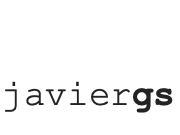I served as a chair of Sandra Calzada-Delgado’s Graduate Supervisory Committee. She received the degree of Master of Applied Computing at Universidad de Guadalajara, campus La Cienega.
This thesis was successfully defended on May 2007.
Abstract
The primary purpose of the Archaeological Project of Sayula River Basin (PACS) is to understand the socio-cultural development of the pre-Hispanic groups that settled in western Mexico and to analyze the socio-cultural information of the area through a regional approach, considering the river basin as a non-arbitrary universe of study, geographically bounded and culturally well defined, and taking into account its integration into the exchange and interaction networks in western Mexico and in other areas of Mesoamerica.
This thesis work support PACS by designing an information system for managing the archaeological sites, obtaining as a final product a model that can be implemented to automate and manage the gathered information. The development of such a system directly impacts increment productivity and the reduction of material costs by (1) automating manual tasks, (2) providing completely new skills to execute tasks and functions, and (3) reducing the user’s level of frustration compared to the current working style. The system concentrates the information in one place where anyone in the working group is able to quickly access it and get reports in a timely and reliable manner.
The resulting information system will be integrated within the project called “Environmental and Cultural Atlas of the Sayula River Basin,” which is currently in process and is coordinated by the Academic Department of Geography at the Center for Social Sciences and Humanities of the Universidad de Guadalajara (CUCSH – UDG), whose objective is to develop a multimedia product that allows the integration, analysis, and synthesis of the “Sayula River Basin” territory, combining three features: time, attributes, and locations.
Thesis Book
This are the first seven pages of Sandra’s thesis (in spanish).
